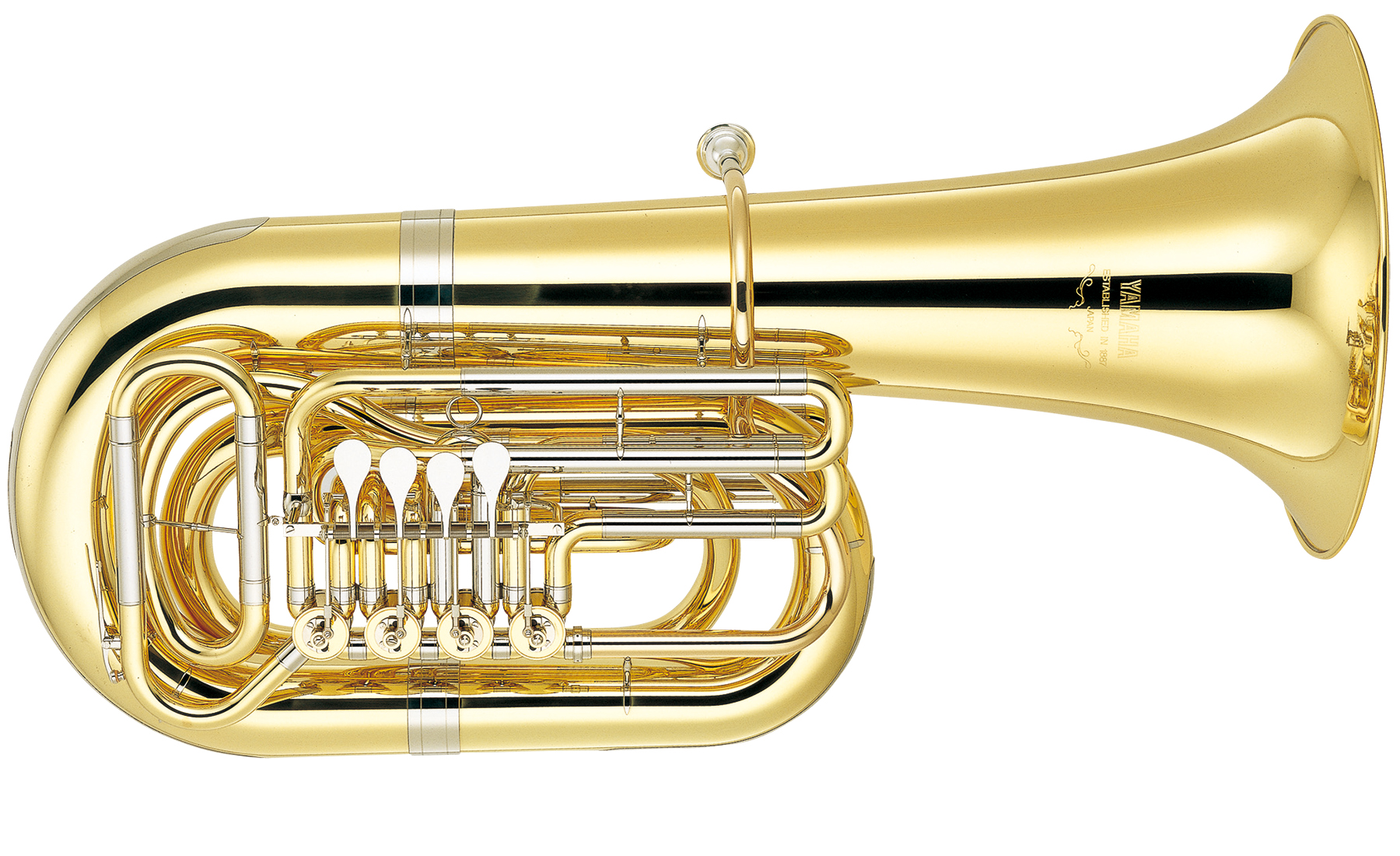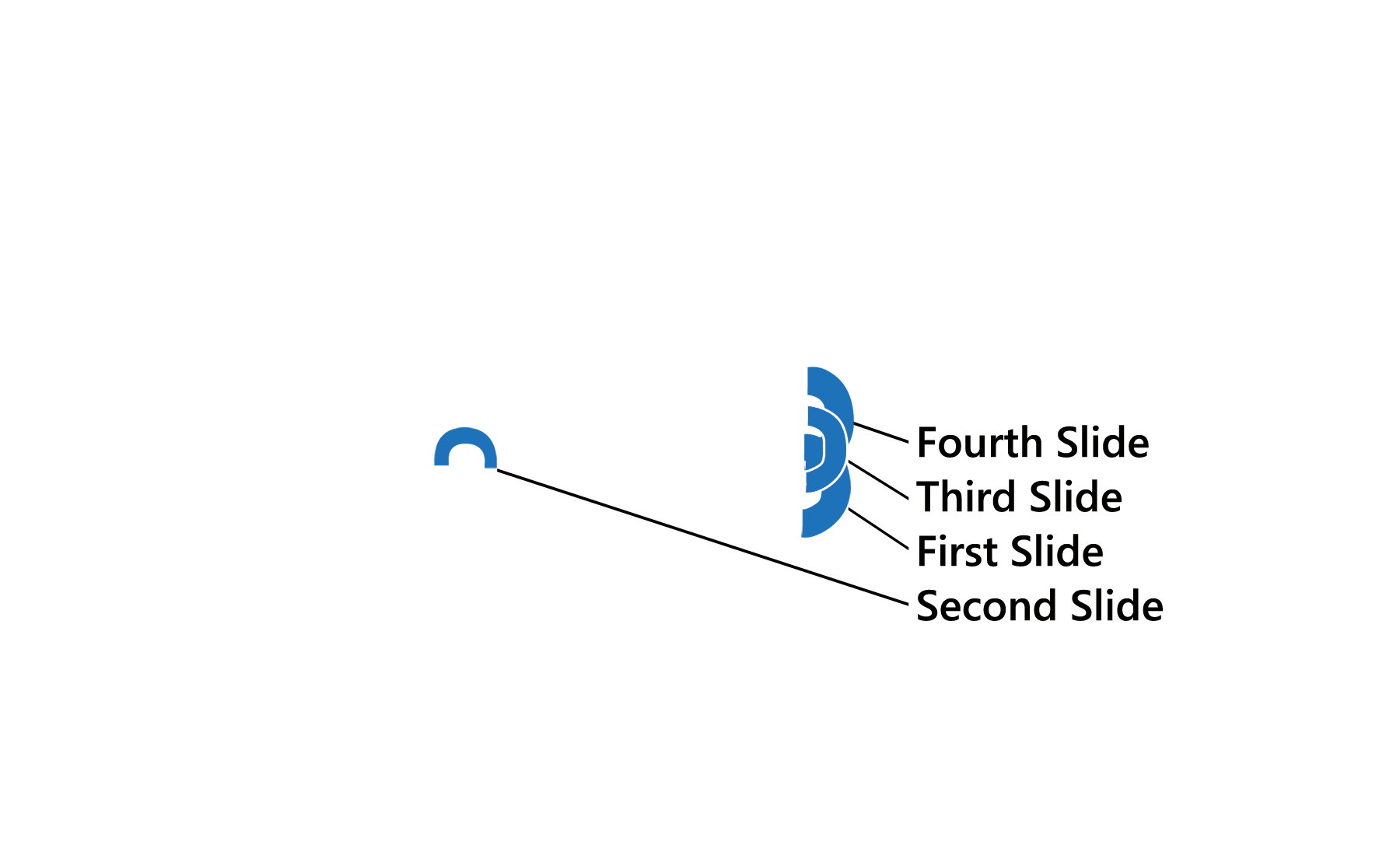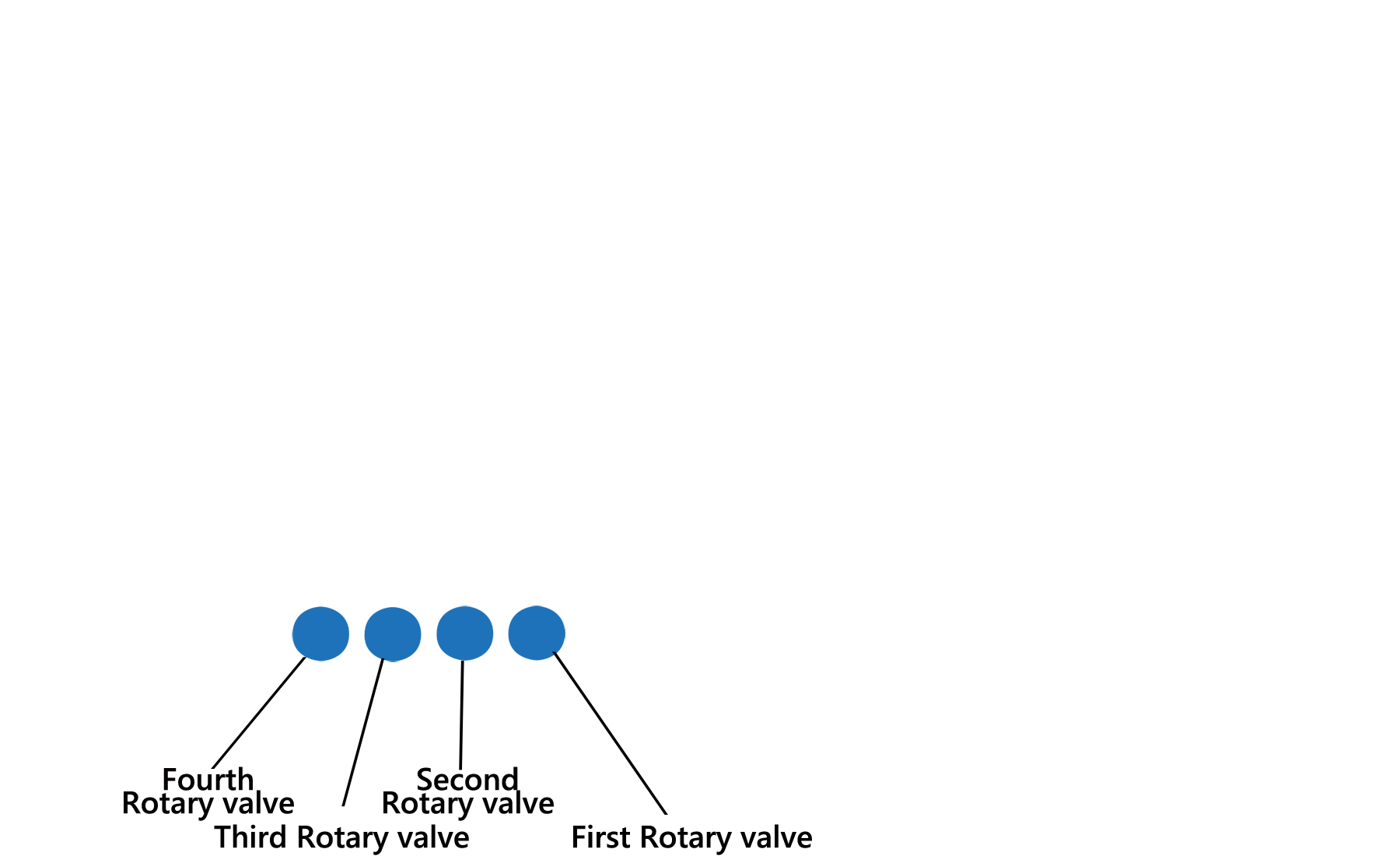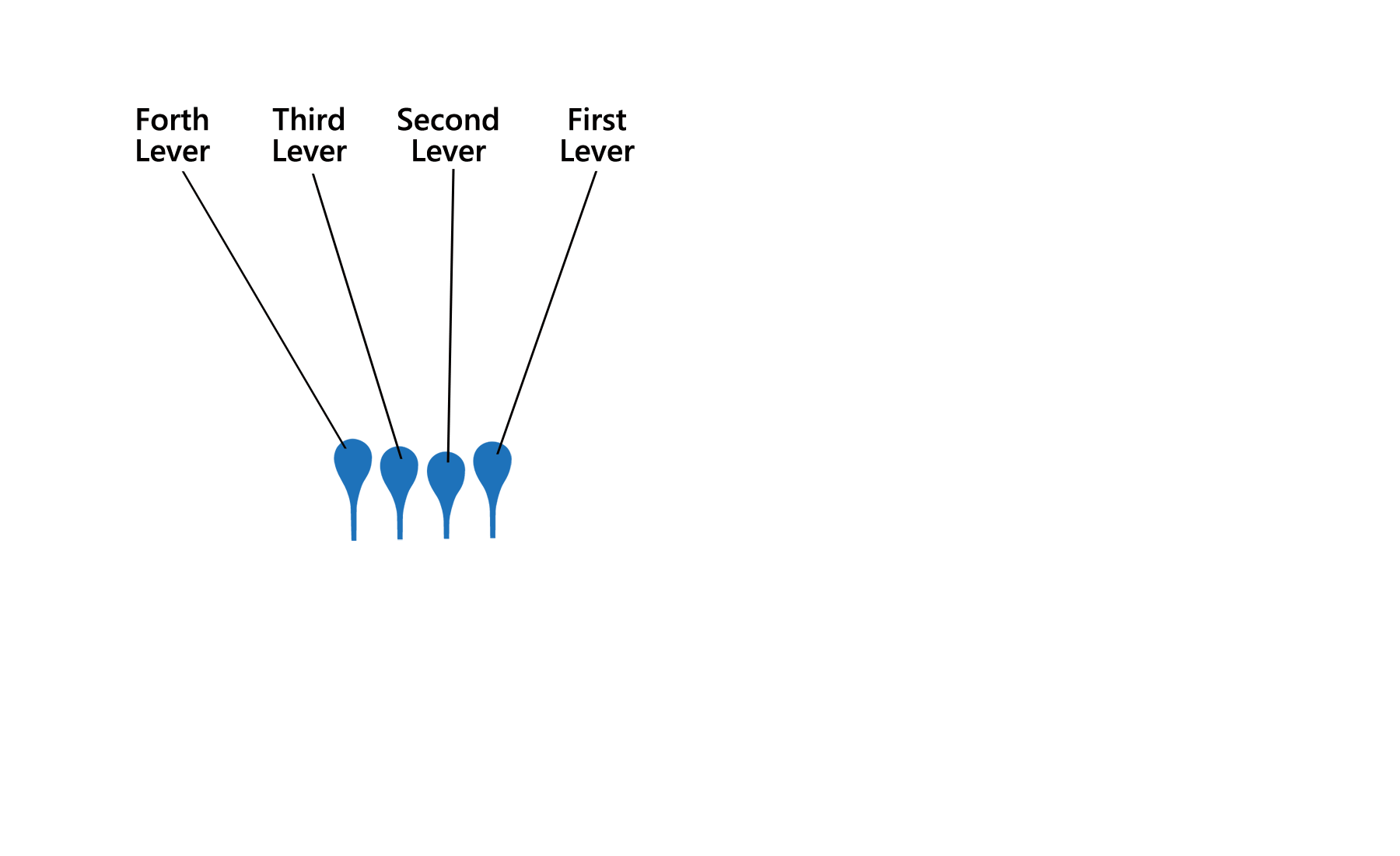The Structure of the Tuba
A Conical Tube as Long as 9.6 Meters
A conical tube everywhere except for the slides
On a tuba, the tube is always conical and its bore gradually increases from the blowpipe to the bell. Only the slides, however, are untapered. Slides refer to tubes through which air flows only when the valves are depressed.
Depress the lever to lower the pitch
The diagram shows a rotary-valved tuba with a row of four round devices near the center of the instrument. These are the rotary valves. If you depress the levers on the left, the first lever opens the first slide tube, the second lever opens the second slide tube, the third lever opens the third slide tube, and the fourth lever opens the fourth slide tube. The pitch drops in proportion to the increased tube length in each case. This is the same mechanism that a trumpet uses: the first valve lowers the pitch one tone, the second valve a semitone, the third valve one and a half tones, and the fourth valve two and a half tones.
Names of the parts of a tuba
When you play the tuba, this is the path your breath travels!
The next diagram shows how the air travels when you blow through the mouthpiece. For the tuba with the lowest tonal range (the B♭ tuba), your breath goes approximately 5.40 meters when no valves are depressed. That increases to approximately 9.60 meters, though, when all the valves are depressed.
Example of how air flows through the tuba
No levers pressed
First lever pressed
Second and third levers pressed
Fourth lever pressed
All levers pressed
Musical Instrument Guide:Tuba Contents
Origins
Structure
How to Play
How the Instrument is Made
Choosing an Instrument
Trivia
- A Massive Tuba from 100 Years Ago
- Depending on the Country, a Baritone is Not a Baritone
- The Cinbasso-Popular in Italian Opera
- All Brass Instruments Have Marching Band Models
- Famous Musical Pieces for the Tuba (Bass)
- The Compensating System for the Euphonium
- There are Various Mutes for the Tuba
- Ease of Playing Pedal Tones
- Why Are Tubas So Expensive?
- Do Jazz Musicians Play the Tuba?
- Brass Band Songs Featuring the Tuba
- An Instrument in the Key of B♭, Yet the Music is Written in C













